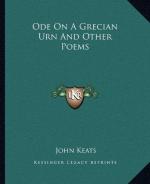|
This section contains 379 words (approx. 1 page at 400 words per page) |

|
Cleanth Brooks, Jr., the most prominent of the American "New Critics," argues in a 1944 essay that the speaker in "Ode on a Grecian Urn" is in agreement with the urn's truth-beauty statement at end of the ode. The urn's "flowery tale," its history "has the validity of myth," Brooks writes, "-not myth as a pretty but irrelevant make-believe, an idle fancy, but myth as a valid perception of reality." Thus, its message of beauty is also one of truth, "the only kind of truth we are likely to get on this earth, and, furthermore, the only kind we have to have." In an essay written six years later, Leonard Unger asserts that the truth-beauty statement is in keeping with Keats's view toward a higher truth through art. "Art takes its truth from life, and then returns it to life as beauty," Unger writes. "The paradox that...
|
This section contains 379 words (approx. 1 page at 400 words per page) |

|




